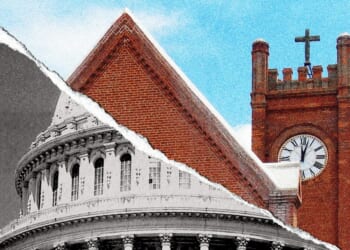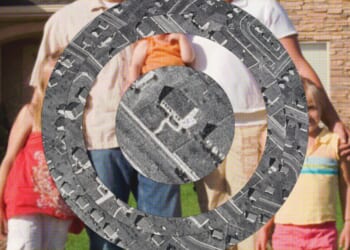This post The Empire-Builders’ Secret appeared first on Daily Reckoning.
Speed. Reliability. Reach.
Those are the hallmarks of any great communication system, whether you’re a Persian emperor trying to hold together the largest empire on Earth, or an American frontier government trying to link gold miners in California to politicians in Washington.
This is the story of two such systems — the Royal Road of the Achaemenid Empire and the Pony Express of the American West. Separated by 2,500 years and two hemispheres, they nevertheless followed the same principle: build the fastest, most efficient relay network humanly possible… and watch your empire thrive.
The Royal Road: Persia’s Artery of Empire
The Royal Road was the internet of its time — a state-run communications superhighway that stitched together the sprawling Achaemenid Empire under Darius I in the 5th century BCE.
Stretching an astonishing 1,677 miles (2,699 km), it ran from Sardis in western Anatolia (modern Turkey) to Susa, one of Persia’s main capitals in what is now Iran. That’s roughly equivalent to a road from Paris to Istanbul. And it wasn’t just a dirt track. This thing was engineered, graded, patrolled, secured, and maintained.
Infrastructure with a Capital “I”
This road wasn’t for peasants and pilgrims. It was for the state — for messages, soldiers, spies, and taxes. Darius built it as a central nervous system for governance. And he knew that speed was a form of power.
To make it work, the Persians installed relay stations, called chapar khaneh, every 15 to 20 miles. These housed fresh horses, riders, food, and rest areas. Like a chain of pit stops, they allowed the king’s messengers — the famous Angariae — to ride night and day without pause.
Herodotus marveled at their efficiency, famously writing:
Nothing mortal travels so fast as these Persian messengers… neither snow, nor rain, nor heat, nor darkness of night prevents them from accomplishing their appointed course.
If that sounds familiar, it’s because the U.S. Postal Service lifted that motto straight off Herodotus. No shame. It’s a good line.
Speed Kills (or in this case, Rules)
Using this system, a message could travel from Sardis to Susa in just seven days. Without the Royal Road, that trip would take a month or more. In other words, Persia was communicating four times faster than the average Greek city-state. No wonder they built an empire that lasted two centuries.
Imagine the power that gave them:
- Rebellions could be crushed before they spread.
- Taxes and goods flowed with less leakage.
- Orders could be enforced with ruthless precision.
The Royal Road wasn’t just a road—it was a weapon.
The Influence Spreads: Rome, Byzantium, and Beyond
After Persia, the baton passed to the Romans, who improved on the idea with their famous cursus publicus—a similar relay system of post stations, horses, and riders, but laid over a 66,000-mile road network that bound together their sprawling empire.
The Byzantines adopted it. So did the Islamic Caliphates. Charlemagne used similar courier systems in the Carolingian Empire. In the East, China’s Tang Dynasty established a postal relay network of similar sophistication, complete with inns, rest stops, and postal inspectors.
All of these systems echoed the Persian principle: standardized, secure, and state-run communication — a kind of imperial Wi-Fi for the ancient world.
But let’s fast-forward 2,300 years — the terrain changes. The goal doesn’t.
The Pony Express: Galloping into the American Century
By 1860, the United States had a problem. California was part of the Union, but it was challenging to get a message through. The telegraph line ended in Missouri. Steamships could carry mail through Panama, but that took weeks.
Enter the Pony Express.
An American Answer to Ancient Persia
Just like Darius, American entrepreneurs William Russell, Alexander Majors, and William Waddell saw a need for speed. So they created a relay system of 190 stations spaced every 10–15 miles along a 1,966-mile route from St. Joseph, Missouri, to Sacramento, California.
At each station, a new horse — and sometimes a new rider — was waiting. Riders carried saddlebags called mochilas, filled with up to 20 pounds of mail, and changed mounts 8 to 10 times per shift.
The result? A letter could travel from Missouri to California in 10 days, less than half the time it took stagecoaches or ships to travel.
Extreme Sports, 1860 Edition
Pony Express riders were the ultra-endurance athletes of their time:
- They were young (often teenagers), small (weighing less than 125 pounds), and tough as nails.
- They rode in all weather, through hostile territory, facing bandits, blizzards, and the occasional arrow.
- One rider, William “Buffalo Bill” Cody, allegedly covered 322 miles in less than 22 hours during an emergency. (However, it’s still disputed whether Buffalo Bill ever rode for the Express at all.)
They earned around $100 a month — a princely sum at the time. And they were national legends before the ink dried.
Short-Lived but Lasting
Despite its legend, the Pony Express lasted only 18 months. It was expensive, dangerous, and quickly replaced by the completion of the transcontinental telegraph in 1861.
But like the Royal Road, its influence far outlasted its operational life. It proved what was possible: that the vastness of a continent, or empire, could be conquered by information moving at the speed of muscle and ingenuity.
Empire, Speed, and the Eternal War Against Distance
So what links the Royal Road and the Pony Express?
Everything.
- Both were infrastructure projects born of necessity.
- Both used relay systems with fresh animals and trained riders.
- Both prioritized reliability, speed, and security.
- And both served not just as a means of communication, but also as a means of governance, commerce, and cohesion.
And here’s the deeper takeaway:
Every empire that mattered figured out how to beat distance. The Greeks had messengers. The Romans built roads. The Persians had the Royal Road. The Americans had the Pony Express. And now, we have fiber optics, satellites, and secure encrypted messaging.
But the logic hasn’t changed.
The faster you can move information, the quicker you can move power.
Wrap Up
The Royal Road didn’t just carry messages — it carried order. It made the Persian Empire more transparent. It informed Susa of what was happening in Sardis and allowed troops to move at will to any frontier.
Likewise, the Pony Express wasn’t just a postal service — it was a strategic answer to national fragmentation. It kept California mentally in the Union, just as much as militarily.
We may not think much about roads or relays anymore. But we live on their spiritual descendants every time we send a text, watch the news, or trade a stock. The challenge has always been the same: shrink time, tame distance, hold power together.
From Darius to Russell, the solution has always been: Build a better way.
The post The Empire-Builders’ Secret appeared first on Daily Reckoning.















